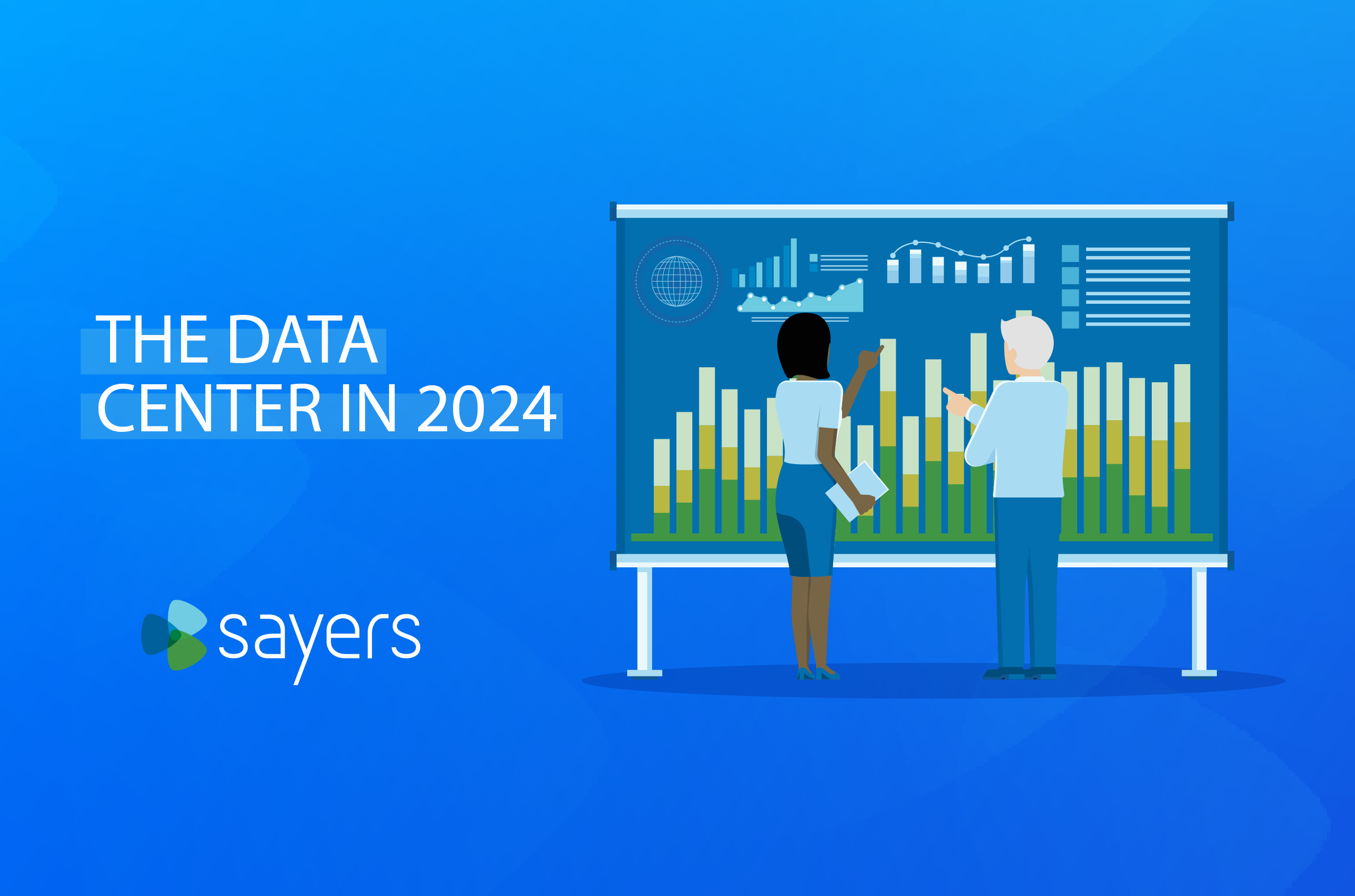


2024 promises to be another transformative year for technology and trends in the data center, with advancements in storing, processing, managing, and securing data.
Our engineering experts recently shared their data center insights with Sayers employees in an internal information session. Use the following highlights from that panel discussion to stay current on what’s next, including the impact of ransomware and AI on data center strategies.
2024 will see continued rapid growth in unstructured data, which makes up around 80% of most enterprises’ data volume. Unstructured data includes machine-generated data gathered from sensors, websites, and applications, as well as the relentless streams of email, video, media files, and social media.
The rise of artificial intelligence means more organizations will start dabbling with large language models, a type of AI algorithms that rely on huge datasets to learn and understand language and perform specific tasks.
Wade Scheffner, Solutions Architect at Sayers, says:
“AI is going to drive digital consumption on the storage side. Companies that want to keep all those data points somewhere also want to keep control of that data.”
Storage options growing in demand include:
Object storage offerings such as Pure Storage FlashBlade® or VAST Data Platform can address the demands of unstructured data and modern workloads. For data protection and cyber resiliency, expect to see more vendors come out this year with better security and compliance features, along with improvements in performance and monitoring.
Organizations increasingly will choose as-a-service options based on cost, resource constraints, and other considerations. Scheffner says:
“Companies’ data sets are growing. They have data and infrastructure in the cloud and on-prem. As the infrastructure team tries to handle all of that, what’s easier than just having someone else deploy and manage it so their teams can focus on other things?”
As-a-service options are appealing to organizations that need to increase capacity but are limited in making capital purchases. Shifting from a traditional capex storage or compute to an opex model with as-a-service gives infrastructure teams the ability to better manage capacity. Gartner predicts:
By 2028, consumption-based STaaS will replace over 35% of enterprise storage capex, up from less than 10% in 2023.
Ransomware hit an all-time high in 2023. An analysis from the cyber insurance company Coalition found the average ransom demand was $1.62 million in 1H 2023 — up 74% over the past year.
Concerns about ransomware have led more companies to increase their data center storage as part of their business resiliency planning. As companies get more mature in one cloud, they will want to start diversifying themselves with multi-cloud backup capability to protect data and workloads in other clouds, on premise, and/or at the edge.
Such an approach offers benefits from both a resiliency and cost-cutting point of view.
Kevin Finch, Senior Business Continuity Architect at Sayers, says:
“We’re going to see more storage vendors come out with multi-cloud offerings. So, if your cloud provider gets compromised, you’ve got another copy of the data with a different cloud provider. You also might find it cheaper to have your long-term storage with one cloud vendor than another.”
Backup and recovery play a growing role in cybersecurity insurance, as claims continue to increase. Finch says:
“Cyber insurers are going to have no choice but to be more picky and raise premiums. Companies are going to realize it’s cheaper to fund a resiliency program (with proper security controls and backups for data recovery) than to keep paying higher cyber insurance premiums because their cyber insurer raises their rates for not being prepared.”
Additional technologies to consider include:
“We will start to see AI getting plugged in for data retention purposes. AI can go through and identify data the organization can safely delete because it’s out of policy or because deleting it would reduce liability. Companies can get rid of some of their old data and save the cost of storing it.”
Steve Johnson, Senior Solutions Architect at Sayers, says:
“Digital twin technology will be the next step in true data protection of your environment. Meanwhile, we will see a lot more backup as a service or disaster recovery as a service happening.”
According to Gartner:
By 2026, organizations that prioritize their security investments based on a continuous exposure management program will be 3x less likely to suffer a breach.
The new generation of servers in the data center, along with the increased computing power needed for analytics and AI, require companies to reevaluate their power consumption. Scheffner says:
“There was a time when we didn’t think about power as a concern. But as the new CPUs continue to grow and consume more power, power consumption will continue to increase with your data center upgrades.”
Organizations are adding graphics processing units – a more specialized hardware component that supports the central processing unit by handling complex calculations in parallel – to their servers to handle the increased needs of analytics and AI. This in turn may require more power distribution units to meet the challenge of power protection and management.
According to Gartner:
By 2028, more than 70% of enterprises will alter their data center strategy due to limited energy supply, up from less than 5% in 2023.
As companies spin up more AI-related workloads, those computing processes get hotter. Air cooling and new liquid cooling options are available to protect racks and servers in data centers.
Finch warns of another power-related issue, saying:
“Power interruptions and outages are still the biggest threat to companies. The more power your data center is consuming, the more vulnerable you’re going to be.”
Organizations that spread their data center infrastructure and tools among hybrid cloud and multi-cloud models need greater observability. Observability platforms can provide real-time, full-stack monitoring of your public cloud assets, on-premise server and network infrastructure, and application performance.
By knowing what infrastructure, applications, and data you have, where they are, and what they’re doing, you can perform more efficient resource utilization and data backups. This becomes more essential with the massive growth of unstructured data.
Scheffner says:
“Observability will be important moving forward, so you understand what you have, what’s being used, and what we can do to help alleviate power consumption and find savings wherever possible.”
Consider this:
Next-generation observability platforms incorporate AI and machine learning capabilities to help create an automated performance baseline of your environment. They can proactively detect anomalies, alert your team with minimal false positives, and improve mean-time-to-recovery of critical assets.
Questions? Contact us at Sayers today to discover more about data center solutions and how they can help your business.